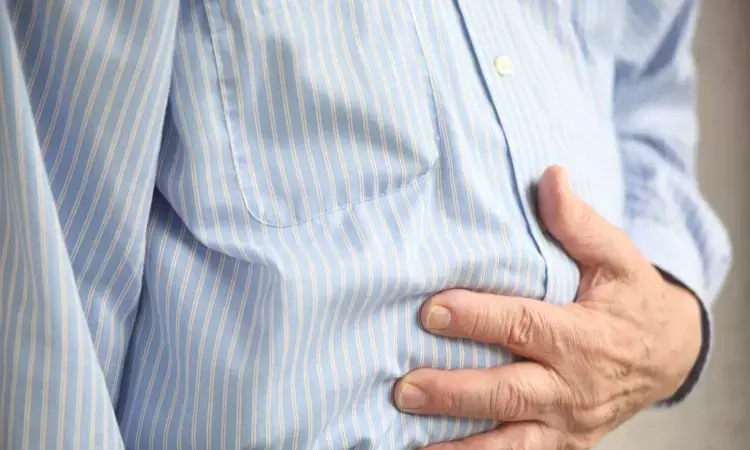GLP-1 medications like Ozempic, Wegovy, Mounjaro, and Zepbound have helped countless people with weight loss and blood sugar control, but nausea is one of the most common side effects—especially in the first few weeks. If you’re feeling queasy, don’t worry—you’re not alone, and there are ways to manage it.
Through trial and error, I’ve found strategies that help minimize GLP-1 nausea, and tracking my symptoms with Pep has been a game changer. This article will cover why nausea happens, how long it lasts, and what you can do to feel better.
Why Does GLP-1 Medication Cause Nausea?
GLP-1 medications work by slowing down digestion and regulating appetite, which can cause food to stay in your stomach longer. While this helps with portion control and weight loss, it can also lead to delayed gastric emptying, making you feel nauseous.
Common reasons for nausea on GLP-1 medications:
- Slower digestion – Food stays in your stomach longer, leading to bloating and nausea.
- Increased sensitivity to fatty or heavy foods – High-fat meals take even longer to digest.
- Dose adjustments – Nausea can spike when increasing your dosage.
- Dehydration – Not drinking enough water can worsen nausea and dizziness.
- Eating too fast or too much – Large meals can overwhelm your slowed digestion.
How Long Does Nausea Last on GLP-1 Medications?
For most people, nausea is temporary and improves as the body adjusts.
- First Few Weeks: Nausea tends to be strongest when first starting GLP-1 therapy.
- After a Dose Increase: Symptoms may return for a few days after increasing your dose.
- Long-Term: Most users report nausea fading within 2-4 weeks as their body adapts.
If nausea persists beyond a month or is severe enough to impact your daily life, talk to your doctor about adjusting your dosage or trying different strategies.
Tracking symptoms in Pep can help you see patterns and identify what triggers nausea for you.
Best Ways to Reduce Nausea on GLP-1 Medications
1. Eat Small, Frequent Meals
Instead of three large meals, try eating four to six smaller meals throughout the day. Large meals can overwhelm your slowed digestion and trigger nausea.
Best foods for nausea relief:
- Plain crackers or toast
- Oatmeal or plain rice
- Bananas, applesauce, or other gentle fruits
- Lean proteins like chicken, turkey, or tofu
- Yogurt or light soups
2. Avoid Fatty and Greasy Foods
High-fat foods take longer to digest and can worsen nausea on GLP-1 medications.
Limit or avoid:
- Fried foods
- Fast food
- Heavy cream-based sauces
- Butter and full-fat dairy
Instead, opt for lean proteins, whole grains, and easily digestible vegetables.
3. Eat Slowly and Stop Before Feeling Full
Since your digestion is slower, eating too fast can make nausea worse. Try:
- Taking smaller bites and chewing food thoroughly.
- Pausing between bites to allow your stomach time to process.
- Stopping when you feel satisfied—don’t wait until you’re overly full.
4. Stay Hydrated, But Sip Slowly
Dehydration can make nausea worse, but drinking too much water at once can also be overwhelming.
- Sip water throughout the day instead of chugging.
- Try ginger tea, peppermint tea, or electrolyte drinks to settle your stomach.
- Avoid carbonated drinks—they can increase bloating and nausea.
Pep has a hydration tracker that helps ensure you’re drinking enough without overloading your stomach.
5. Take Your Medication at the Right Time
Some users find that taking GLP-1 shots at a different time of day helps manage nausea.
- Morning: If nausea isn’t too bad, morning injections can help you track symptoms throughout the day.
- Evening: If nausea is strong, taking your shot at night may allow you to sleep through the worst of it.
Experiment to see which timing works best for you.
6. Try Ginger or Peppermint for Natural Relief
Both ginger and peppermint have been shown to help ease nausea.
- Ginger tea, ginger chews, or ginger capsules can calm your stomach.
- Peppermint tea or peppermint oil can provide relief.
7. Track Your Symptoms to Find Triggers
Not everyone’s nausea is triggered the same way. Tracking when you feel sick and what you ate before it happened can help you identify patterns.
With Pep, you can:
- Log nausea episodes and what you ate before them.
- Monitor how nausea changes after dose increases.
- See what foods or habits help you feel better.
Having all this information in one place makes it easier to adjust your routine and reduce nausea faster.
When to Talk to Your Doctor
Mild nausea is common, but you should contact your doctor if:
- Nausea is persistent and severe for more than a month.
- You’re vomiting frequently and struggling to keep food down.
- You experience dizziness, dehydration, or extreme fatigue.
- You lose an excessive amount of weight too quickly.
Your doctor may recommend dose adjustments, anti-nausea medications, or switching to a different GLP-1 option if nausea is impacting your quality of life.
Final Thoughts: Managing Nausea on GLP-1 Medications
Nausea on GLP-1 medications is temporary for most people, and simple adjustments can make a big difference.
Top Tips to Reduce Nausea:
- Eat small, frequent meals with gentle foods.
- Avoid fatty, greasy, and heavy meals.
- Drink fluids slowly and stay hydrated.
- Take your medication at the time that works best for you.
- Use ginger, peppermint, or tea for nausea relief.
- Track symptoms in Pep to find what works best for you.
If you’re struggling with nausea, give it time—your body will adjust. And in the meantime, using Pep can help you track what’s working so you can start feeling better faster.
Download Pep today to log your symptoms and improve your GLP-1 journey!




Pingback: Ultimate Guide to GLP-1 Weight Loss: Science, Expectations, and Real Results - Pep GLP-1 Tracker